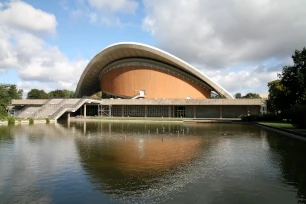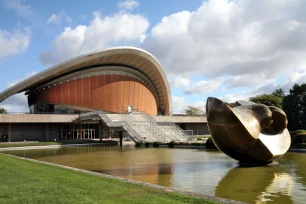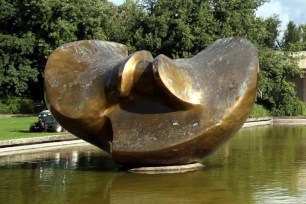The House of World Cultures (Haus Der Kulturen Der Welt) was built in post-war Berlin, Germany, with the purpose of serving as “a symbol and beacon of freedom” and to promote the importance of respecting one another’s cultural differences.
Building the House of World Cultures

The building constructed for the House of World Cultures was the United States’ contribution to the INTERBAU 1957 building exhibition in Berlin. The U.S. was one of 22 countries that participated in this international building endeavor, which helped new buildings spring up in the totally destroyed Hansa Quarter of the city.
The design of the building was by architect Hugh Stubbins, who first began tackling the project in 1955. It was Stubbins’s desire to produce a venue that would be host to cultural events and congresses.
Stubbins hoped that the curved roof on the Haus Der Kulturen Der Welt would resemble wings and symbolize the promise that there would be “no restrictions on the freedom of intellectual work”. Residents, however, have likened the curved roof to the body of a “pregnant oyster”, which in German has earned the building the nickname “Schwangere Auster”.

Unfortunately, the signature curved roof collapsed in 1980 but was rebuilt, retaining its original shape but with extra supports to ensure that the collapse would not reoccur.
The Venue
Currently, the House of World Cultures is home to temporary exhibitions on global cultures and non-European avant-garde art. Presentation of films, theatre and dance performances, lectures, concerts and congresses are also held on the stages and halls inside this vast building. A number of individuals who are at the forefront of non-European political and cultural scenes have been guests at the venue.
Henry Moore Sculpture

In the middle of a large pool in front of the building sits a modern sculpture created by Henry Moore. The sculpture, entitled «Large Divided Oval: Butterfly» was installed here in 1987 on the occasion of the Berlin’s 750th anniversary. The massive bronze sculpture, which weighs over eighty tonnes, was Moore’s last work.
Carillon
Near the House of World Cultures stands a 42-meter-tall (138 ft) carillon. The granite carillon was a gift of the Daimler-Benz company to the city of Berlin for its 750th anniversary. It holds 68 bells, the largest of which weighs 7.8 tonnes. You can listen to concerts every Sunday during summer.
- Next: Neue Wache
- More Sights & Attractions in Berlin

